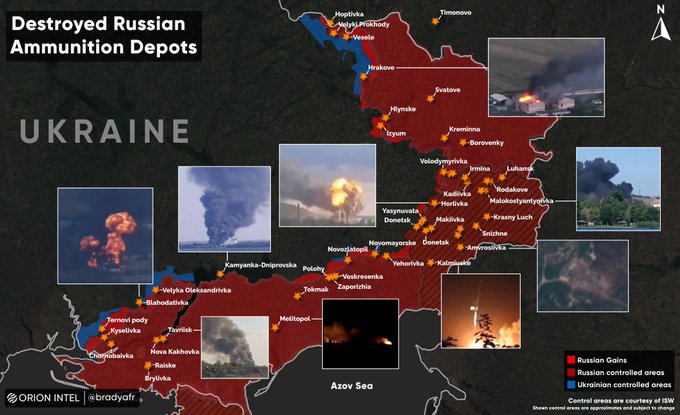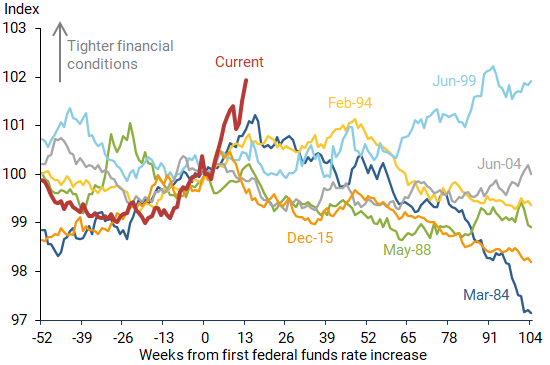Ukraine will end up with a “frozen conflict” one way or the other. The only question is how frozen for how long? Framed that way, the Ukraine’s diplomatic/political end game is obvious. A conflict frozen long enough to outlast Putin’s life span – political and/or literal (he is 69 years old). 5 years is too short. 10-15 years is likely enough.
This sucks for everyone – especially Ukraine and ordinary Russians. But everyone paying crazy gas prices would like to see a good-faith, negotiated solution to the Ukraine war. Putin needs a face-saving exit most of all. But Putin himself has taken that option off the table. We all know he won’t keep his word. Any agreement with Putin might as well be signed on toilet paper.
So who gets to decide the end game? Ukraine! I’m stunned how many commentators refuse to see that simple truth – especially the “it is the US’s fault for not barring Ukraine from NATO!!!” “realist” crowd. Ukraine is not some US puppet state. It is their war. The rest of us are bystanders. Some countries have more influence than others (see below). But we must start with Ukraine’s interests.
What are Ukraine’s likely goals?
- Degrade/destroy the Russian military. Leaving Putin impotent until past his sell-by date in power and/or on this earth. Putin is 69 years old. So preferably for the next 10-15 years. At least for the next 5-10 years
- Re-capture as much territory as possible before winter sets in and/or the Ukrainian Army exhausts itself. Achieve defensible lines. Setting up a strategically advantaged pressure point to threaten/bleed Russia as a bonus – Crimea being a good candidate.
- Don’t tip things over into nuclear war.
#1 – Degrade the Russian Military: With this second Russian military collapse (around Karkhiv/Izyum) Ukraine has likely won a 5-10 year window of Russian military impotence. A near-certain 3rd Russian collapse around Kherson likely advances Ukraine to the 10-15 year window. Another collapse around Melitipol/Mariupol would be icing on the cake – incursions into Crimea and the Donbas being bonus points (and carrying rising nuclear risk).
Russia’s military hardware losses will take years to replace – especially under sustained sanctions for things like semiconductors. Remember we now know every chip that goes into the designs Russia has fired into Ukraine. It would take more years to fix the obvious organizational and intellectual flaws of the rigid Russian command and fighting approach. Those are likely un-fixable under the dead hand of a damaged autocrat like Putin. Even with a free hand, it would take a generational change along the lines of the post-Vietnam US military reconstruction.
#2 – Territorial gains: TBD. Ukraine did just re-take thousands of square kilometers in the last week. With Kherson likely and Melitipol/Mariupol + Crimea + Donbas still in balance. Even if they just re-take Kherson, Ukraine will be in decent shape. Note those gains came after a spate of summertime “informed” articles declaring the conflict a stalemate. Things tend to happen in a non-linear way in both war and peace, but especially in war.
The USA, Europe, Russia, and Putin’s Interests.
What are the USA’s interests? Ours lies mostly in #1 (destroy Putin’s army). But we’ll will go along with #2 (territory) as long as it doesn’t threaten #3 (kaboom).
What is the European interest? Who cares? It doesn’t matter! Outside of the UK, the Europeans aren’t giving enough military support to Ukraine to get a seat at the table. Poland and Slovakia – the transit points for arms shipments – have leverage. But they hate/fear Russia as much Ukraine. The rest of Europe – especially the Germans – are just along for the ride. Their military cupboards are too bare to act as an inducement and they can’t withdraw aid they aren’t capable of giving. A lesson learned for the future, but its too late for them to get in the game now.
What is the Russian interest? Get rid of Putin and get out of the clutches of the Chinese before its too late. Better a prosperous junior member/partner of the EU than an impoverished oil and gas milk cow for the Chinese. Enough said.
What is Putin’s interest? Who cares? It doesn’t matter! Ukraine will decide how, where, and when the war ends. Putin lost control of the end game about 4-5 days after the invasion. He lost control of the war – and thus “lost the war” – before the summer. Outside of pre-emptive surrender, Putin has even less say on the matter than the Germans do (which is saying a lot).
Putin’s best option now is a face-saving not-so-obvious surrender. Barring a battlefield miracle, that is the best deal he can get.
However, Putin’s prior bad faith takes a good-faith negotiated settlement off the table. No-one will believe him. Whatever paper he signs, the world will assume a bad-faith frozen conflict. The Ukrainians know that better than anyone. So they will keep punching until their knuckles give out. More on that in my next post.




